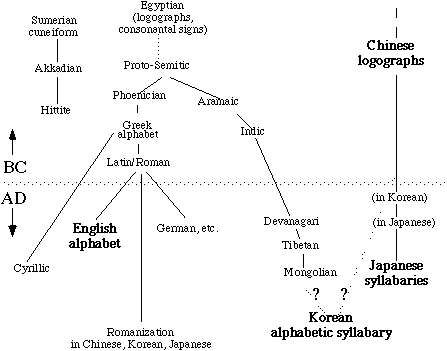

Figure 1-3. Where do the Chinese, Korean, Japanese, and English scripts come from?
Figure 1-3 shows the historical interrelationships among the major scripts of the world: the Sumerian cuneiform with no modern descendants; the Semitic scripts and their many descendants; Chinese characters and their few descendants; and the independently created script in Korea, which has no descendant. The figure is intended mainly to show where the four scripts of our interest Chinese, Korean, Japanese, and English fit in; it is not intended to include all the scripts that did or do exist.
The Proto-Semitic system developed in the vast Semitic area extending
from Sinai to northern Syria in the middle of the second millennium BC,
... This script was the ancestor to the all-important Phoenician and Aramaic
scripts. ![]()
As shown in Figure 1-3 the Aramaic script was the ancestor of the Indic
script (e.g., Gauer 1984; Gelb 1952). One of the most important descendants
of the Indic script is Devanagari, which is the script for Sanskrit literature
and for the Hindi language; as such it is the most widely used script in
India today. ![]()
The Indic script is the ancestor to the Tibetan script, which in turn is the ancestor of the Mongolian script called Paspa, which was used for 100 years in the Middle Ages. Paspa is hypothesized by some scholars as the model for the Korean phonetic script. If this hypothesis were proven correct, then all the alphabets of the world could be traced back to one source, but it has not been so proven (Part II).
Between the 8th and 11th centuries BC the Phoenician consonantal alphabet was augmented by the Greeks, who created letters for vowels. In the Greek language, which is a member of the Indo-European language family, vowels are as important as consonants, unlike in Semitic Phoenician. The Greek alphabet in turn is the source of the Cyrillic alphabet used in Russia and some other East European nations. It is also the source of the Latin alphabet, which led to most of the contemporary European alphabets, including Spanish, French, Finnish, German, Polish, and English.
All alphabets derived from the Latin alphabet are called Roman alphabets; their letters are similar but by no means identical in shapes, names, order, number, and sound values. The Roman alphabet has been adopted even by the Chinese, Koreans, and Japanese to write words for readers of English and other European languages (see "Chinese, Korean, and Japanese in Roman Letters," below).
Independently of, but in a course parallel to, the developments in the Middle East, Chinese characters emerged in China in antiquity, 3400 years ago, or perhaps even 6000 years ago. Remarkably they are still used by one-quarter of the world's population. Many characters were originally pictographs but are now stylized configurations of lines and dots. Chinese characters are logographs, each of which represents the meaning, and also the syllable, of a morpheme. Chinese characters were adopted by the Koreans about 1700 years ago and by the Japanese a century or two later. They were once, but are no longer, used by such Southeast Asian people as Vietnamese and such Central Asian people as the Qidans (or Khitans whose kingdom existed between 10th and 12th centuries AD), neither of whom are discussed further in this book.
Out of Chinese characters the Japanese developed two forms of a syllabary around the 9th century AD. Largely independently of Chinese characters, the Koreans created in the mid-15th century AD a unique alphabet that has little resemblance to the alphabets derived from the Phoenician system and that is used like a syllabary.